Success! We finally managed to visit the Cluny Museum (a.k.a. Musée National du Moyen Age), and it was fantastic. The building itself is built within a structure that began as Gallo-Roman baths, with the 15th-century addition of an elaborate residence. The setting couldn't be more perfect to showcase their fascinating and extensive collection of ancient, medieval, and early Renaissance art. The array of media on display was impressive; tapestries (below, for example) are an obvious draw to this museum, as it is the home of the famous Lady and the Unicorn tapestries (on which more later).
But the show was not limited to the textile arts, not in the least. One of the most impressive elements of the museum is the way its huge stone rooms and original medieval structure lends itself to exhibiting monumental architectural elements, including portal statuary, pillar capitals, and even an entire cathedral portal (arched entranceway), which was transported to Paris from elsewhere in France when its original home was damaged, and which has since been integrated into the interior of the museum in a very organic-feeling way. Also very impressive was the room of huge capitals depicting, on one side of the room, the heads of the kings of France, and on another side the huge headless bodies of a series of prophets. A limited amount of natural light streamed into this room, which marked the boundary between the original baths and the later addition of the medieval Hôtel de Cluny. These angel sculptures were in the same space:
The recorded audioguides were a wealth of useful information. In the Cluny chapel, constructed as part of the original mansion, we were given the history of how the tiny chapel was used, including entrances, exits, and the special "hagiometer" that allowed the abbot to participate in the service semi-remotely. (Personally I think it's inexcusable that Philip Pullman's His Dark Materials trilogy passed up the opportunity to use the word "hagiometer"—though if it had, the thing would probably have been higher-tech and more sinister than a simple peephole in a stone wall.) In an exhibit on swords, which was on display in their rotating exhibit gallery located in the former gallo-roman "Frigidarium" (PULLMAN?? WHERE ARE YOU??), we were given fascinating backstory on this piece:
Apparently, the soldier arresting Christ is marked as a sinister alien "other" not only by his Oriental features, but also by the curved shape of his sword, which contrasts with the straight blade that St. Peter (to Christ's left) is in the process of pulling from its scabbard. A cultural tip-off I never would have honed in on, but one presented in a particularly clever way: the curators juxtaposed this piece with a looped video playing a sword fight scene from a Hollywood movie, between a blond and a dark-haired knight. We passed the screen before reaching the above piece, and I commented that the brown-haired actor was probably the bad guy, because of his looks and because he got in a few good strokes on the blond—the good guy is always about to come off worst in a duel when he "unexpectedly" rallies, right? It turns out this carved piece was operating on exactly the same kind of signifiers, but ones I would no longer have picked up on. Interesting how little people change. In an unrelated note, I also think it's cool how much of the polychromy (brightly colored paint work, which was present on most medieval carvings but has since worn off) is still visible in this piece.
One thing I find appealing about medieval art is the way it treats as everyday objects things in which we as a general culture have stopped believing. So, in the tapestry above, a few of the characters are holy men doing something or other in the course of the story of Christ's life. A lot more people are just going about their daily business, like the fellow on the left here, picking up some luggage that was stored in the hold of the backgrounded ship, in order to bring it home with him. Right next to him? A series of grotesque demons who seem to be falling haphazardly from the sky. It's all in a day's work, you know? I like that about the medieval mindset. I think it's one reason I tend not to like modern historical fiction set in these times: few authors can replicate the credulous yet blasé stance toward what we now think of as the "supernatural," found in actual medieval art and literature.
Also on display was the typically medieval tendency to revel in the grotesque. This was especially prominent in the stained glass portions of the exhibit: the blinding of Sampson (above), or the panel that opens this blog entry (which depicts Job's livestock being taken away, although it's plainly being taken by a devil whereas my understanding has always been that God himself screwed Job over in order to test the poor fellow). One sometimes forgets the intense physicality of a lot of medieval art, but it's definitely there: in one exhibit of choir stalls, some of the carved misericords (those little platforms that allowed the monks to rest their feet during mass) even featured bawdy scenes!
The big draw to the Cluny, for me as for many folks, was the famous set of six Lady and Unicorn tapestries, and man, they did not disappoint. They're kept under very dim light in a special rotunda, due to their delicate condition, so I couldn't really take pictures, but believe it or not a tear came to my eye upon entering the room with them. They certainly have a magic about them, and the artistry involved in rendering the animals, facial expressions, and drapery of the ladies' garments in woven form is pretty incredible. They are more or less an installation, given that they were intended as a set that would line the walls of a room, and seeing them in person, at full size and all together, was quite powerful.
In the Lady and Unicorn tapestries, as well as most of the tapestries in the Cluny, animals play a central role, and that was true in the stained glass and even the painted works as well. I loved the above section of stained glass with its depiction of partridges, and another favorite was this crazy-looking winged rabbit-cum-porcupine from a tapestry in the chapel. I can't really tell if this is an example of the artist having seen, perhaps, a porcupine's quill without seeing the whole animal (the quills look quite naturalistic to me), or whether it's just a similarly loose interpretation as some of the lions and weasels that feature in these same tapestries.
All in all, we spent a good half a day in the Cluny, and were starving when we emerged around 3:30pm. Before taking off for our picnic lunch, though, we did swing by the gift shop, where I accidentally dropped a 50-euro-cent coin behind the register and invoked the wrath of the gift store lady. "Ce n'est pas important," I assured her, and she let loose with a torrent of Parisian French about why it WAS important, and how she would never be able to find this coin. As David said as we were walking away, since this kind of behavior accords so strongly with American stereotypes about Parisians, and since we have encountered absolutely NONE of it prior to this, the Cluny gift store lady could be considered a kind of rite of passage for our trip. Anyway, here's what I got for running the gauntlet with her:
- Monograph on the lady & unicorn tapestries, by Elisabeth Delahaye (director of the Cluny)
- Tristan et Iseut (Béroul and Thomas texts reconstructed by André Mary)
- Abélard et Héloïse Correspondance
The rest of the afternoon was rather more of a Beauvoir/Sartre excursion than a medieval one. We swung by the pâtisserie / boulangerie Eric Kayser, which had been recommended, and which in addition to making delicious food was staffed with super-friendly, jovial Parisians who more than made up for the mildly negative experience in the gift shop. With our bags bulging with pastries, sandwiches and baguettes, we strolled past Beauvoir's alma mater...
...and on to the Jardin de Luxembourg, where she often studied and hung out while she was in school. We grabbed some chairs by a reflecting pool and devoured our sandwiches, while a baby across the way yelled "Bâteau! BATEAU!!" in an ever more insistent voice. It later transpired that he may have been thinking of this little pond, where exuberant children launch tiny sailboats with long sticks, and then run hither and thither tracking their progress.
The sun was warm, and we sat sleepily on a bench people-watching for a half hour or so. I love these promenaded European city parks, used by people of all ages and nationalities in, seemingly, a similar spirit of leisure.
And then, it was on to the Librarie Gallimard, flagship bookstore of the publishing house that took on Sartre and Beauvoir, and coincidentally the publisher of most of the books in French I was interested in buying. Believe it or not, I did not buy them all.
- Simone de Beauvoir: L'invitée (you all know my Beauvoir fixation)
- Simone de Beauvoir: Les mandarins I
- Simone de Beauvoir: Les mandarins II
- Maryse Condé: Moi, Tituba sorcière (Condé has been recommended to me by several people, among them Jenny)
- Marie Darrieussecq: Naissance de fantômes (recommended by Litlove, although I don't remember exactly where)
- André Gide: La porte étroite (recommended by Anthony and by Beauvoir herself)
- Albert Cossery: Un complot de saltimbanques (seen on Three Percent's list of Best Translated Fiction from 2011)
- Marguerite Duras: L'amant (Duras needs no explanation)
- Marguerite Duras: Hiroshima mon amour
- André Breton: Nadja (a general interest in Modernism and Surrealism makes this a must)
- Marie NDiaye: Trois femmes puissantes (may be a dud, but won the Prix Goncourt in 2009, and I've heard good things about her novel Rosie Carpe)
- Irène Némirovsky: Chaleur du sang (I'd read anything by Némirovsky after Suite Française, and this one comes recommended by Sasha)
- Irène Némirovsky: Dimanche (again, Némirovsky)
- Véronique Olmi: Le premier amour (her novella Bord de Mer sounds fantastic based on posts by EL Fay and Isabella among others, but it wasn't available, so I took a chance on another title by Olmi)
- Raymond Queneau: Zazie dans le métro (Oulipo fun)
- Raymond Queneau: Exercices de style (ditto, recently enthused about by my friend Marie Christine and by Jenny)
- Nathalie Sarraute: L'usage de la parole (I picked Sarraute's Le planetarium for the Wolves reading group, but that title wasn't to be had. I'll continue looking, though, and in the meantime picked up two others.)
- Nathalie Sarraute: Martereau
- Georges Simenon: L'homme qui regardait passer les trains (multiple posts by Isabella have me super interested in Simenon)
- Marguerite Yourcenar: Mémoires d'Hadrien (September pick for the Wolves)
Apparently, the good people at Gallimard had a promotional deal going on where the purchase of any two Folio editions earned you a free gift book, so I earned several free editions, although I didn't get to choose them. Still, I'm not complaining. Know anything about any of them? Any good? If not, I'm not out any extra money.
- Patrick Pécherot: Les brouillards de la butte
- Marc Dugain: Une exécution ordinaire
- Stephen Vizinczey: Éloge des femmes mûres
- Frédéric Beigbeder: Dernier inventaire avant liquidation
- Gilbert Sinoué: L'enfant de Bruges
Exhausted and excited, we returned home to a dinner of cheese, fruit, and baguette in our little flat. Tomorrow we're thinking of switching things up from ancient/medieval to avant garde, and combining a visit to the Centre Georges Pompidou (modern art museum) with more tea shopping. The latter might enable David to catch up with my book spending; he is currently browsing the internet to assess the offerings by tea merchants Mariage Frères and Dammann Frères, so that he will be prepared for our visit. We'll let you know how it goes!
Cross-posted to Family Trunk Project.
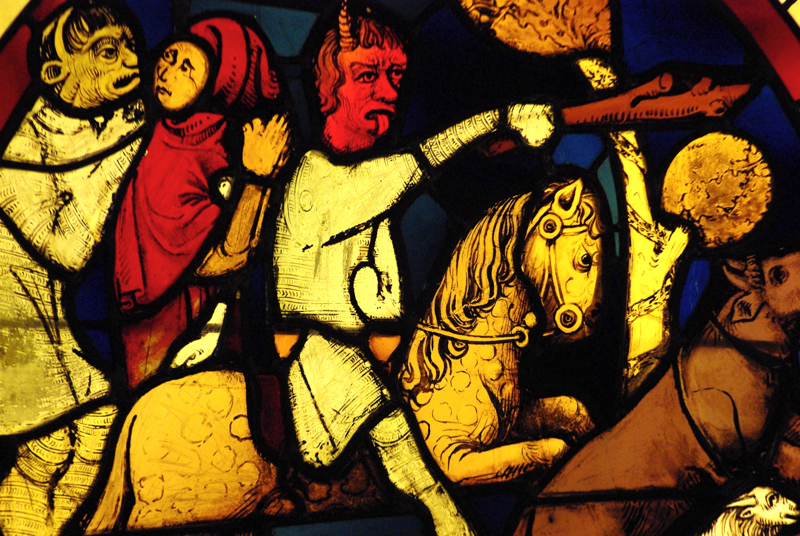
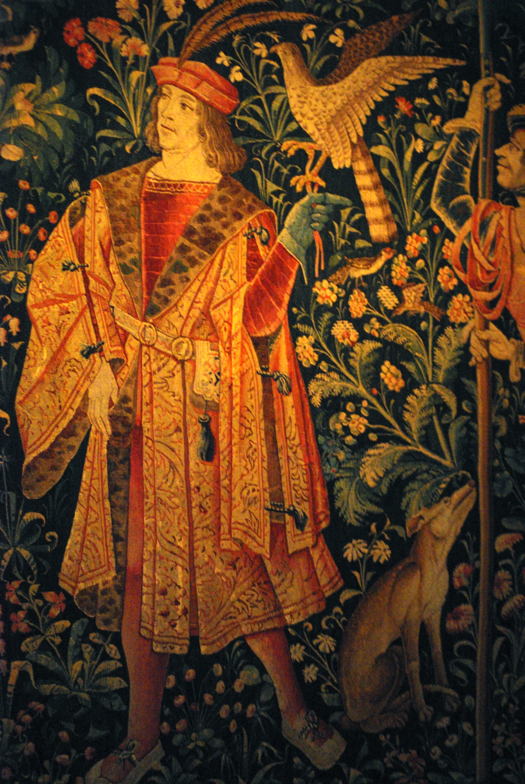
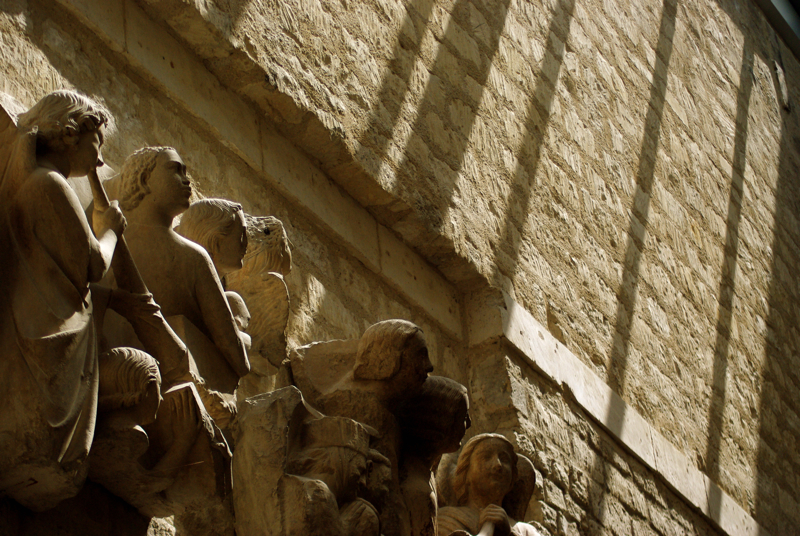
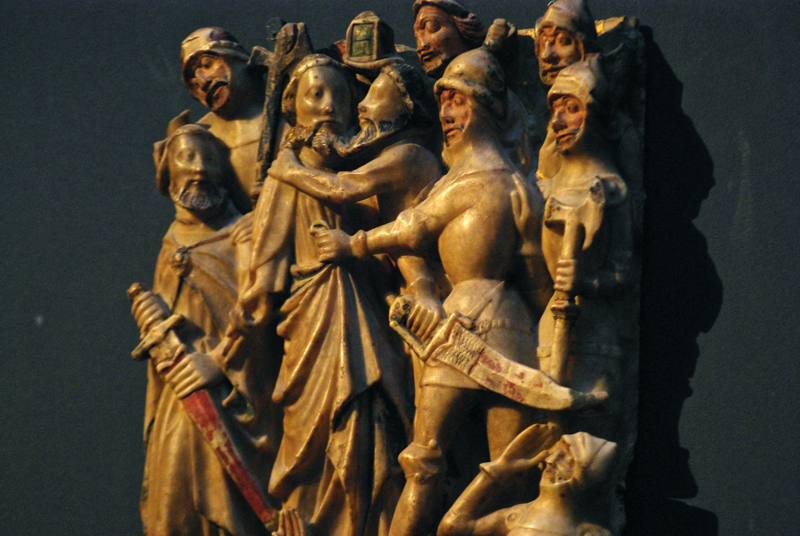
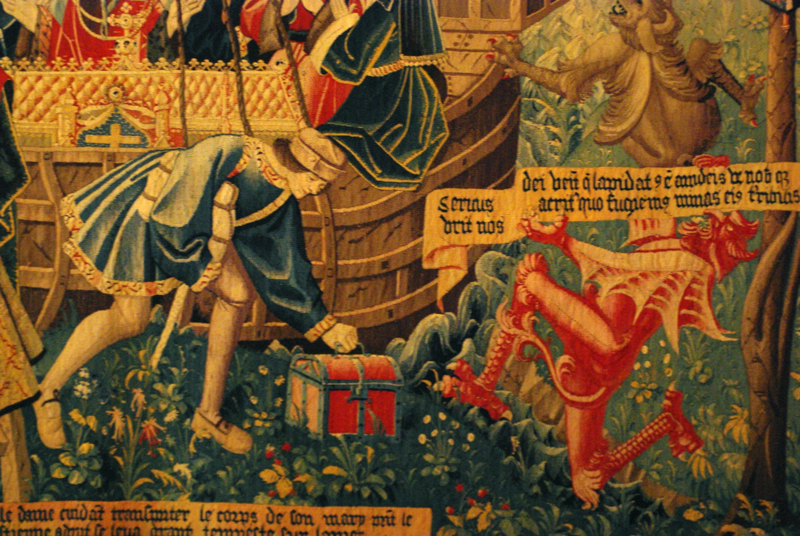
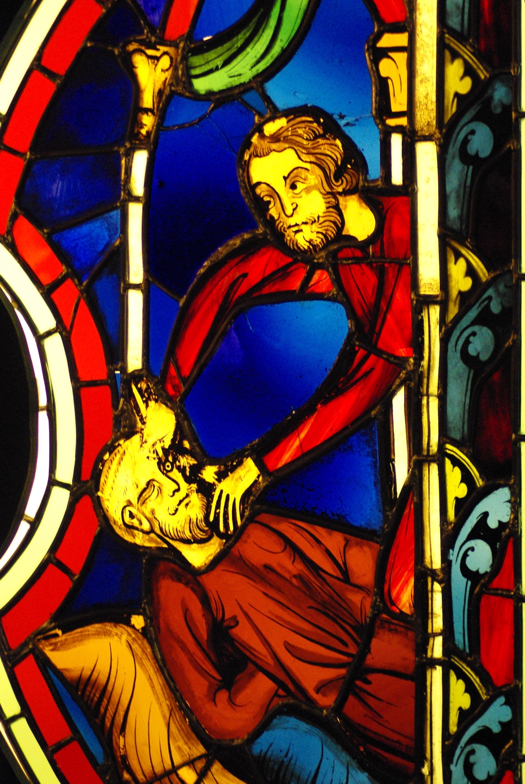
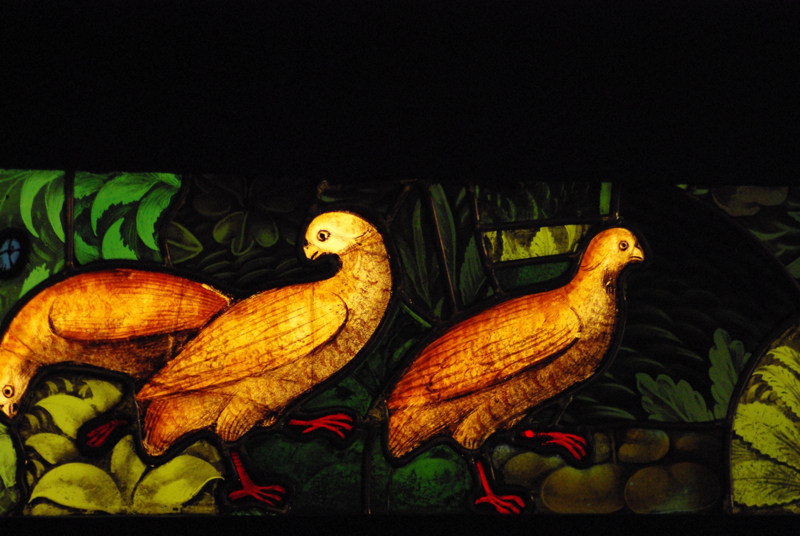
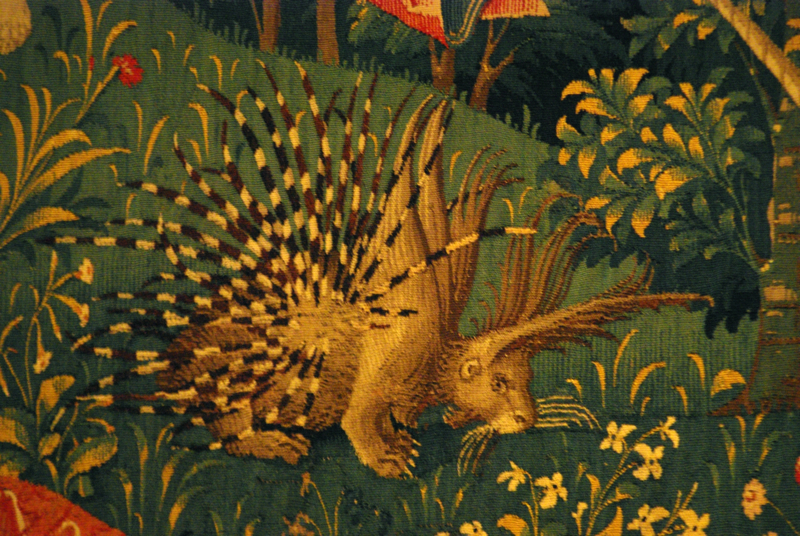
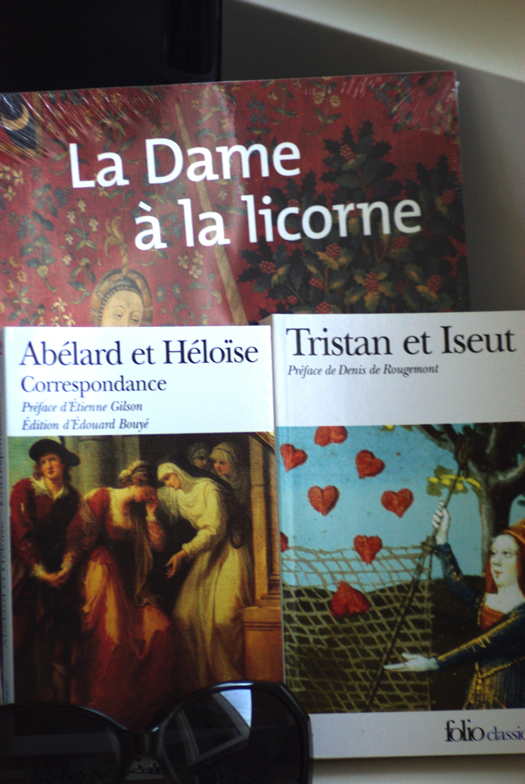
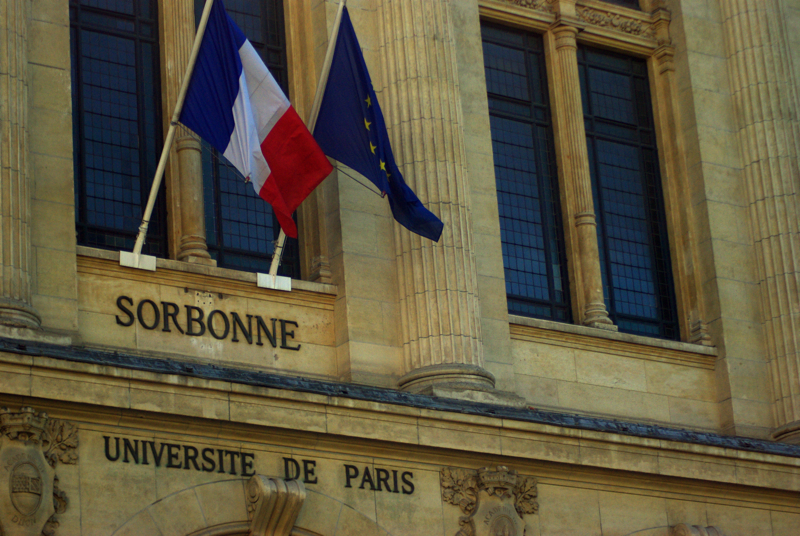
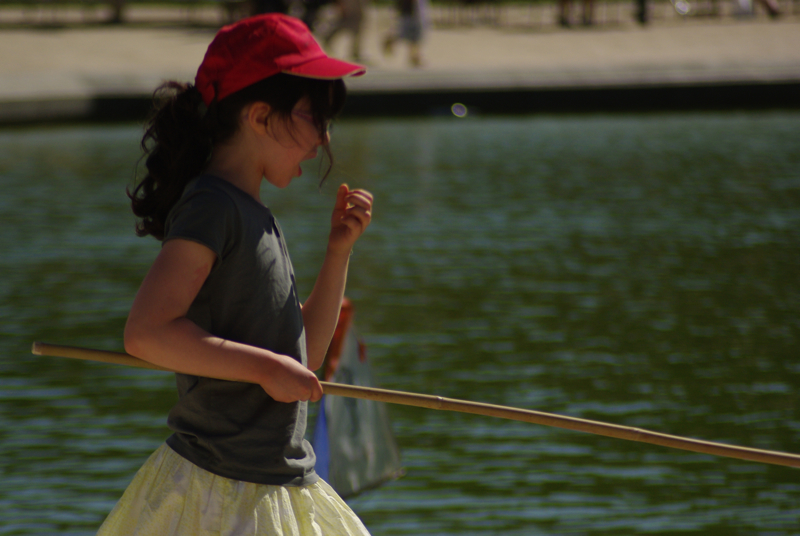
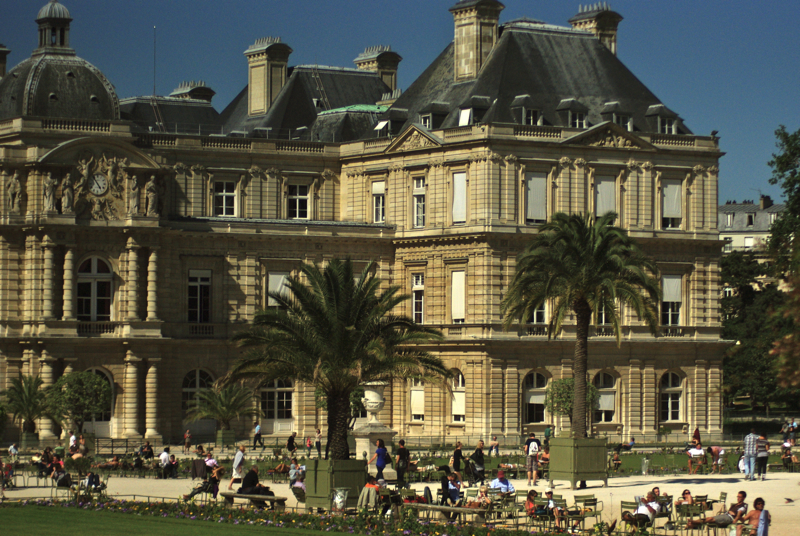
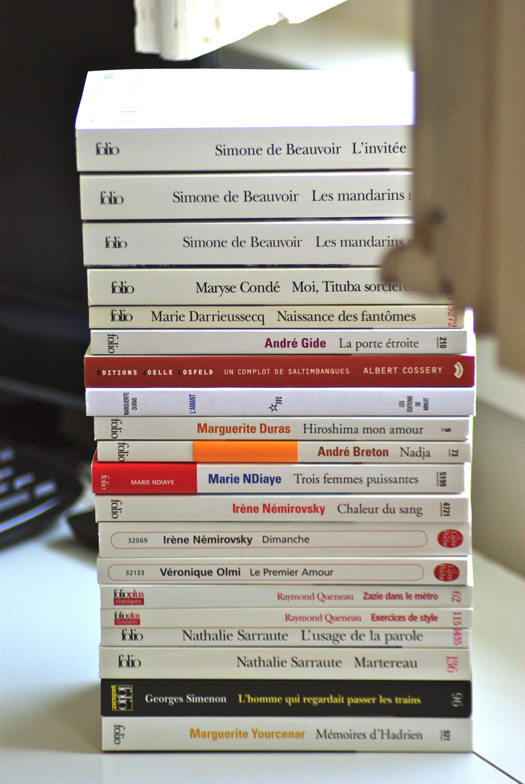
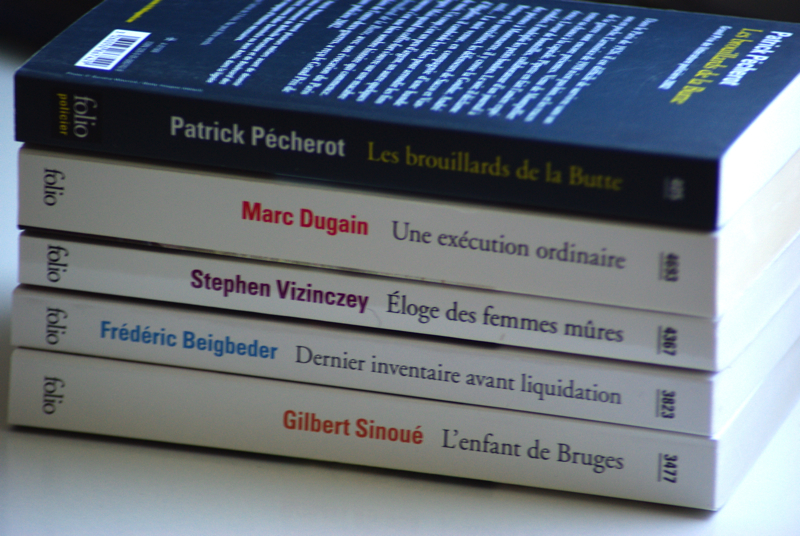


Ma dernière visite au Musée date de 1993 et j'y retournerai avec tes passionnants commentaires!
pour les prophètes décapités: les révolutionnaires confondaient tous les rois!
Oui, les églises romanes étaient peintes. Je te montrerai des traces aux Jacobins.
Les plus belles stalles sculptées que j'ai vues sont celles de Saint Bertrand de Comminges (scènes très coquines! les sculpteurs s'amusaient!)
pour les livres: Tout Gide est à lire et relire et relire..... Idem pour Queneau.
Pour la promo: toutes les éditions de poche font ces promos avant les vacances d'été. En général les livres "offerts" ne sont pas des "must"; je n'ai lu aucun de ceux-là, mais on a beaucoup parlé de ceux de Dugain et Beigbeder. Les romans historiques de Sinoué ont en général du succès.
biz
Ah oui, je ne suis pas etonnée d'entendre que les "promos" soient mois essentiels. Mais je suis emue de commencer à lire les autres! Et les monographies du Pompidou & du Louvre. Et les livres que tu m'as ramassés... :-)
What a day! Were tapestries usually designed and woven by women? And my goodness, what a glorious pile of books you splurged on. I hope your brought an extra suitcase with you!
That's a really good question about who was generally responsible for the production of tapestries. I really have no idea, although a few clues in the audio guide indicated that they were usually produced by workshops, and I wouldn't be surprised if there were weaver's guilds, which would probably have meant no women allowed. I know that happened with the medieval knitting guilds—it used to be men-only, or if women did it they couldn't get paid well for it. Typical. I'd be interested to know if the same was true for tapestries, since I'm basically just speculating. :-)
And well, I actually did bring an extra suitcase...although so far I haven't broken it out yet...
Beautiful, beautiful stuff from the Cluny Museum. I have a particular love of tapestries—and that porcupine! Too good!
I know, isn't the porcupine fantastic? I love tapestries too—particularly being in the same room with them. They have a real presence about them that just doesn't translate in photographic form.